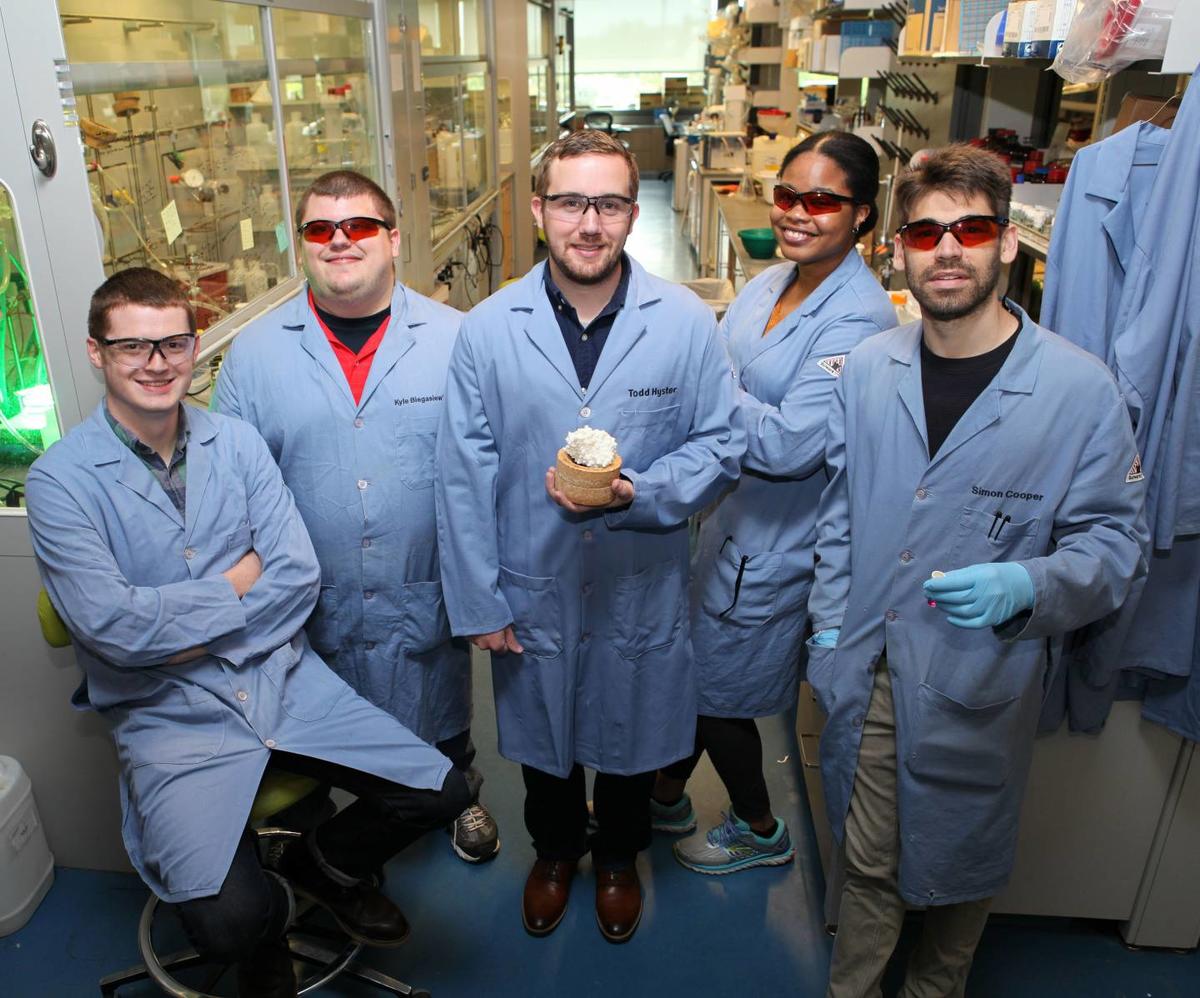Hyster Lab chemists teach enzyme a new trick
Hyster Lab chemists have found a way to make a naturally occurring enzyme take on a new, artificial role, which has significant implications for modern chemistry, including pharmaceutical production. Their work appears in the journal Nature Chemistry.

Photo by C. Todd Reichart, Department of Chemistry
“We have found a completely new way to get enzymes to do a non-natural reaction,” said Todd Hyster, an assistant professor of chemistry. “A traditional perspective says that enzymes will only do one thing. This paper shows that this may not be true for all enzymes. More importantly, the strategy described in this paper can potentially be applied to other enzyme families, meaning we will be able to use this approach to invent completely new enzymatic reactions. I think this has the potential to alter the way we build molecules.”
Enzymes are nature’s catalysts, the keys to making critical biochemical reactions happen quickly enough to sustain life. Organic chemists have exploited this for over 100 years, but until now, their use has been limited, as individual enzymes are often only able to catalyze a single reaction.
Now, the researchers in Hyster’s lab have removed an enzyme from its natural setting, added a few new ingredients, and succeeded in making it catalyze a different type of chemical reaction — where it performed surprisingly well.
“Todd is uncovering hidden abilities in biology’s vast repertoire of chemistry, some of which may not be useful to biology but will be very useful to us,” said Frances Arnold, the Linus Pauling Professor of Chemical Engineering, Bioengineering and Biochemistry at the California Institute of Technology, who was not involved in this research.
“He is showing that enzymes are capable of many feats,” said Arnold, who graduated from Princeton in 1979. “All you have to do is ask the right questions.”
The key was simplifying their understanding of how an enzyme catalyzes a reaction, Hyster said.
“I think I am always surprised that our simplified approach to enzyme catalysis actually works,” Hyster said. “As students, we are taught that enzymes are incredibly complicated and specific catalysts. … Every time we find that they are capable of doing something completely new that nature never intended, it is surprising and exciting.” …
Read the full story here:
https://www.princeton.edu/news/2018/06/21/princeton-chemists-teach-enzyme-new-trick-potential-building-new-molecules
